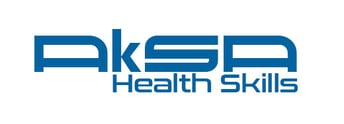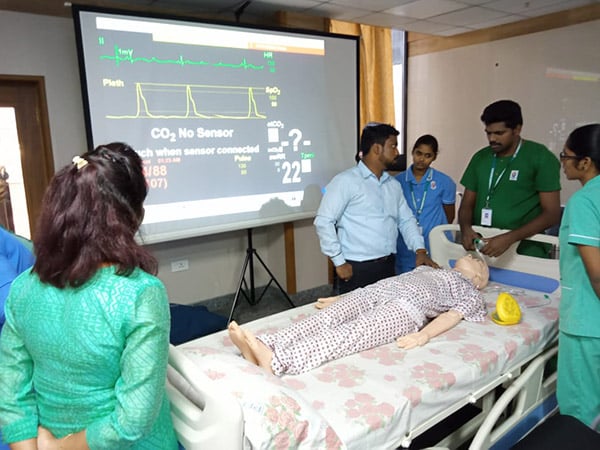 Training Center Profiles Training Center Profiles
Meet Your Peers
Running your own Training Center is both rewarding and challenging. Read on to learn how your peers get it all done and the lessons they’ve learned along the way.
TC Name: United Airlines San Francisco Tech Ops Center
Director of Training: Rick Brown
Instructor and Survey Responder: Leonard Slape
How long have you been an ASHI or MEDIC First Aid TC?
31 years as an emergency care instructor, with 3-5 years as an internal, MEDIC First Aid TC
Based on what you know now, what advice would you have given yourself when you were starting out.
Practice doing a presentation IN FRONT OF A MIRROR, just like an actor practicing his lines. It builds your confidence level, and it also lets you have an opportunity to evaluate your facial expressions and physical reactions to the dialogue. Having that control and confidence in front of a classroom ADDS to your credibility!
Of your business or training investments that cost less than $500, what has given you the best return?
AED simulator
Does your organization offer refresher training?
In our organization, it is required to maintain certification for those who have it.
Where do you go to stay current with the latest industry information and knowledge?
JAMA, American Cardiology Institute, ASHI communications, CEUs that I take periodically to maintain my CMA-AAMA certification.
What is the biggest training challenge at your company?
Getting ALL employees engaged in this training and making them aware of the value of having this knowledge
What is the most difficult part of managing an internal Training Center?
We have to pull the employees out of service for a full shift to accommodate the class, but … getting the employees to actually participate willingly is the most significant challenge, from my perspective.
Can you share a favorite Good Samaritan story about your students?
I had one person tell how he came upon a woman who collapsed on the street right in front of him... a total stranger, but fully unresponsive. [My student went into] "fight or flight" mode, and jumped in to help immediately. [He began] CPR and continued for approximately 6 minutes until medics arrived at the scene and took over the patient's care. He was commended for saving this woman's life by the Paramedic unit, and even had the opportunity to meet the victim (at her request) while she recovered. She suffered from Cardiomegaly, and would never have survived without this man intervening swiftly.
Do you have any specific training tips, such as props, scenarios, or exercises, that you would like to share?
I share my past personal experiences as an EMT, and also my knowledge of cardiology (I have a pacemaker and have had open-heart surgery). One "misnomer" that I love to cover is that, "You cannot 'jump start' a heart with an AED.” A key prop that I use in every class … is to print and hand out copies of rhythm strips for Ventricular Fibrillation (VF) and Pulseless Ventricular Tachycardia (pVT). I explain that there are only two shockable rhythms, as described in our curriculum. I then tell the participants that this is [additional information to help them see how] they are not "jump starting the heart,” but "repolarizing the heart from an arrhythmia.” When they see the squiggly line of Ventricular Fibrillation or the "tombstone waves" of Pulseless Ventricular Tachycardia, it makes [what the AED does] REAL in their eyes, and not just a “machine that shocks the heart.”
Taking that extra two minutes of explanation with visual aids, available on Google, really makes an impact and also tells them how important it is to follow the prompts from the AED in a timely manner.
I also suggest getting "hands on" with performance exercises, and not just telling the class to do what they have seen on the video. Get down on the floor with the mannequin, show the proper way to perform compressions and rescue breaths, then show a bad example of the same exercise. This is not just about instructor credibility, but gives the attendee a real live demonstration that helps their overall performance. I also feel that it will give them the confidence and courage to engage should the "real deal" ever come before them.
 TC Name: Aksa Health Skills, Bangalore, India. https://aksahealthskills.in/ TC Name: Aksa Health Skills, Bangalore, India. https://aksahealthskills.in/
Director: Akhosh Somarajan
How long have you been in business?
3 years, with 8-9 months as an ASHI external TC
What is the biggest challenge for your business?
Educating students about the benefits of ASHI. They know other competitive brands, but we are glad that ASHI is [becoming more well-known] in India.
What do you do to market your training business?
We created awareness [events] at various cities. We visited colleges and hospitals to tell them about [the quality of the ASHI programs.]
Based on what you know now, what advice would you have given yourself when you were starting out?
I would recommend that every health care provider [train with] ASHI.
What are your plans for your Training Center for the next 5-10 years?
[Train more students while keeping costs down]
Of your business or training investments that cost less than $500, what has given you the best return?
ASHI programs
Where do you go to stay current with the latest industry information and knowledge?
Online
Can you share a favorite Good Samaritan story about your students?
Recently, after the training [at a hospital], the staff was able to resuscitate a patient who experienced cardiac arrest during an MRI. They followed the steps for CPR in the proper sequence and resuscitated the patient. [From prior training, they previously performed CPR incorrectly.] The best part was [that the] teamwork during resuscitation was great after [our] classes. The hospital staff [was very appreciative] for the training we gave.

We want to hear from you!
Share your wisdom with your TC peers by completing one of our 15-minute profile surveys.
If your TC provides training for individuals or organizations for a fee, click the "External TC" button. For those TCs that offer training for employees/members at no charge, choose "Internal TC."
 
|